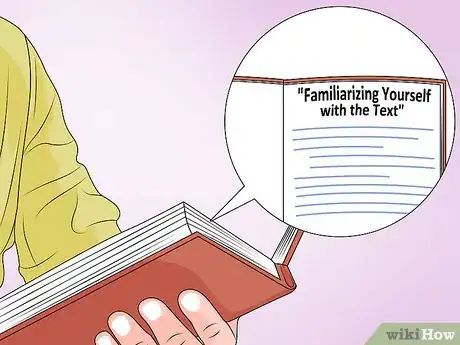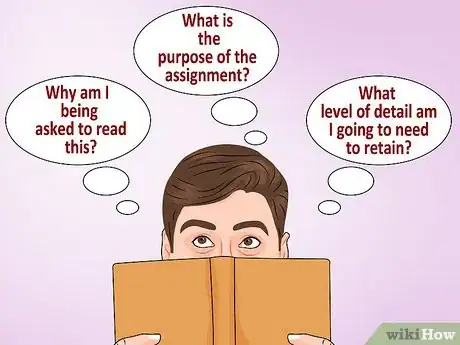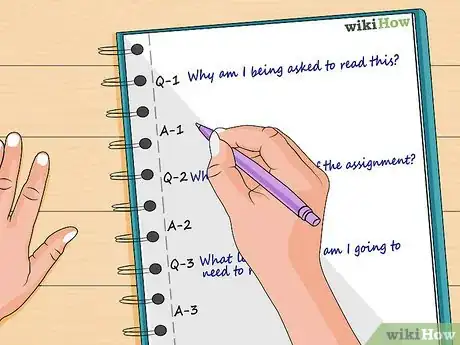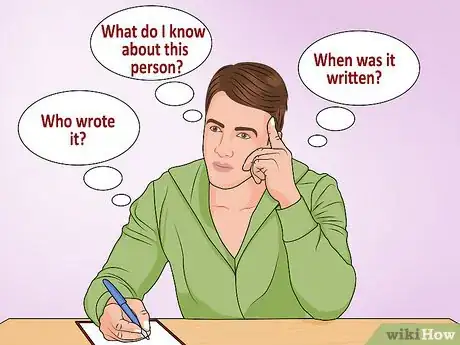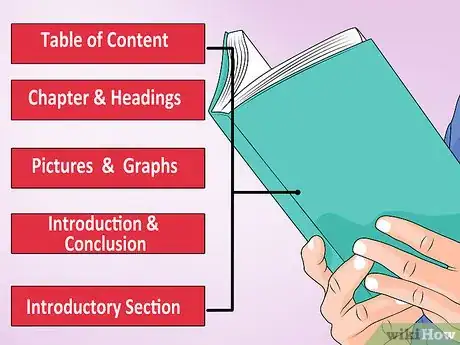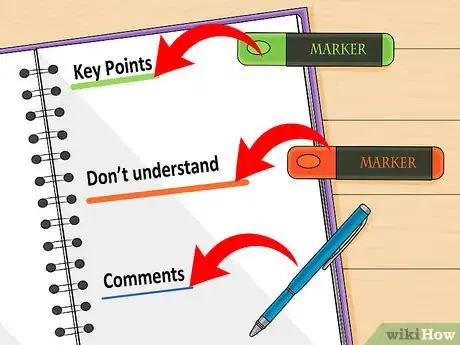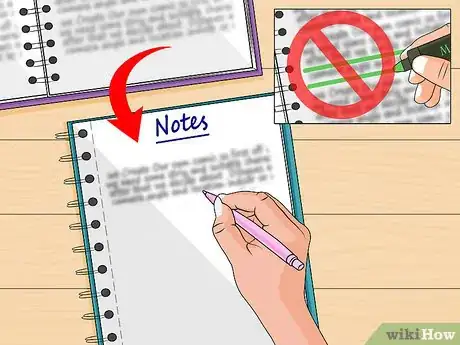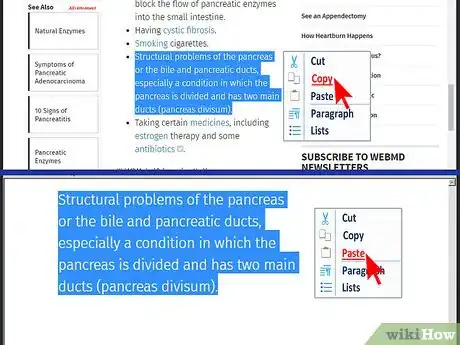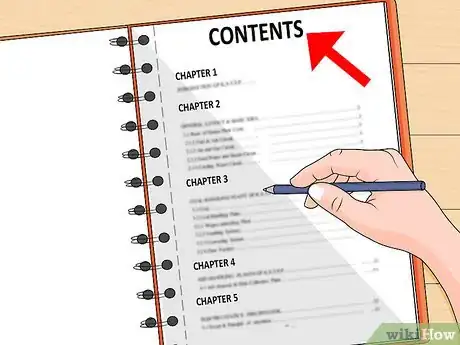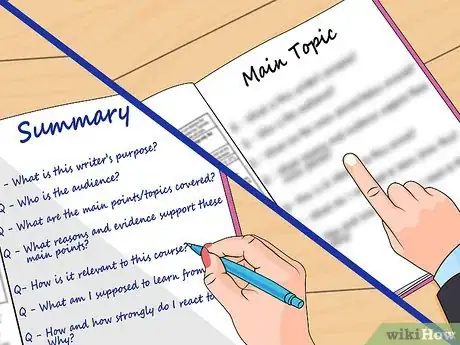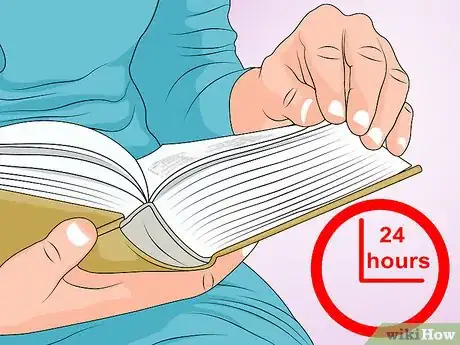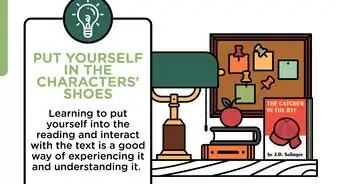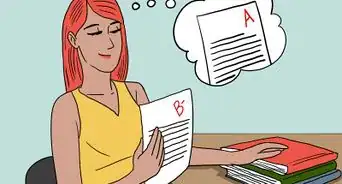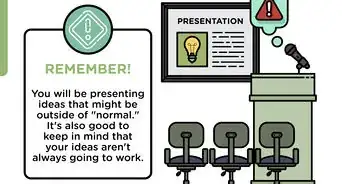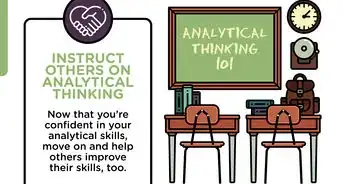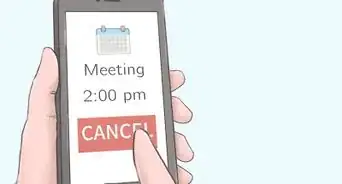wikiHow is a “wiki,” similar to Wikipedia, which means that many of our articles are co-written by multiple authors. To create this article, 23 people, some anonymous, worked to edit and improve it over time.
This article has been viewed 380,334 times.
Learn more...
Many people have experienced frustration because they can either read quickly without necessarily digesting information in depth or they can study carefully as they read, in order to learn something (and therefore read much more slowly). These two actions are not, however, as mutually exclusive as you might have first imagined. Here are some steps to help you get the most out of what you read the first time through.
Things You Should Know
- Give yourself 1-2 minutes to look over the text and think about what you need to absorb from it.
- Use a highlighter to flag key points and things you want to remember. You can quickly reread those passages later.
- Use a different color highlighter to mark things you don’t understand so you can investigate them.
- Write any comments or notes you have alongside the text to help you retain the information.
Steps
Pre-Reading the Text
-
1Pre-read the text. Give yourself a minute or two to just look things over and think about what it is that you need to absorb from the text. Use the steps in the section "Familiarizing Yourself with the Text" to Identify the basics first:[1]
- Is it a list of facts? An understanding of a concept? A sequence of events?
- What sort of learning do you need to do?
-
2Direct your reading with questions about the content you're about to read. Especially if you are reading something that was assigned in class, good questions to consider include:[2]
- Why am I being asked to read this? What is the purpose of the assignment?
- How does this assignment fit in with the rest of what we have been doing? It is the main idea? Or, is it just an example or sideline to the main idea?
- What am I supposed to be getting out of this? (Ideas, background information, procedures, overview?)
- What level of detail am I going to need to retain? (Do I need to understand everything, or will the main ideas be sufficient?)
Advertisement -
3Write down your answers to remind you as you read.
Familiarizing Yourself with the Text
-
1Think about what you already know about the text. This includes considering the context in which it was written, or is used. Sample questions might include:[3]
- Who wrote it? What do I know about this person?
- When was it written? What do I know about that time?
-
2Figure out what is in the book, how it is arranged, and where the important stuff is. Sample strategies include:[4]
- Scan TOC (Table of Contents)
- Scan chapters and headings.
- Look at pictures and graphs.
- Read the introduction and conclusion.
- Scan introductory sections.
-
3Think about what you already know about the topic. You may not need to read more, or you may be able to read only the parts you still need to learn.[5]
Highlighting What Matters
-
1Choose a method that works for you to highlight main ideas and important details. Marking the text serves as a way of anchoring what you've learned––you can find the ideas again quickly and it will also remind you of the initial thoughts you had when reading these marked portions. Methods of highlighting will depend on what you're reading, for example, if it's your own book or the library's or if it's printed on paper or read on a screen.[6]
-
2Try the highlighter and pen reading system if it's your own book or paper. If you read this way, you will always have questions and comments on the reading for class discussion and your teacher will think you are a conscientious, engaged student. The method works as follows:[7]
- Find 2 highlighters and a pen.
- The first highlighter is for key points and things you want to remember. (Be judicious—only highlight a few items per page.)
- The second highlighter is for things you don’t understand, questions, and places you disagree.
- The pen is to write comments in the text. (Writing comments keeps your learning active and helps you remember the content you read.)
-
3
-
4To take notes from an on-screen text, select the text and copy and paste into another document. Some formats also allow on-screen highlighting, comments, and other ways to mark up the text.
Digesting the Reading Matter
-
1Reflect on what you have read. Don’t immediately switch gears when you finish reading. (Switching gears immediately is the surest way to erase everything you just read from your short term memory.) You will process better and remember more if you take a few minutes to reflect on what you read.[8]
-
2Try using two or more of the following strategies:
- Reflect on your pre-reading (fit it into the course goals).
- Write a summary. Here are some sample questions you could discuss:
- What is this writer’s purpose? Who is the audience?
- What are the main points/topics covered?
- What reasons and evidence support these main points?
- How is it relevant to this course? Context.
- What am I supposed to learn from this?
- How and how strongly do I react to this? Why?
- Question the material. What do I think is wrong/right? Why? What reasons do I have for my beliefs?
-
3Review the reading material within 24 hours to process it again. This helps move the material from short-term to long-term memory.[9]
-
4Begin any assignments promptly after reading the text. If you find you need to review the material in order to complete your assignment, you will be able to find the parts you need more quickly.
References
- ↑ https://www.colorincolorado.org/article/introducing-text-reading
- ↑ https://opentextbc.ca/advancedenglish/chapter/pre-reading-strategies/
- ↑ https://students.dartmouth.edu/academic-skills/learning-resources/learning-strategies/reading-techniques
- ↑ https://students.dartmouth.edu/academic-skills/learning-resources/learning-strategies/reading-techniques
- ↑ https://students.dartmouth.edu/academic-skills/learning-resources/learning-strategies/reading-techniques
- ↑ https://learningcenter.unc.edu/tips-and-tools/using-highlighters/
- ↑ https://learningcenter.unc.edu/tips-and-tools/using-highlighters/
- ↑ https://www.readingrockets.org/article/strategies-promote-comprehension
- ↑ https://learningcenter.unc.edu/tips-and-tools/studying-101-study-smarter-not-harder/
About This Article
To learn quickly when reading, start by familiarizing yourself with the reading’s purpose. Start by looking up the text’s historical context, topic, and its contents. Then, while reading, use a pen to mark the main arguments and important examples. As you read, take notes on the author’s claims, your thoughts, and things you don’t understand. When you’ve finished reading, write a summary of the author’s argument to help solidify your understanding. To learn more about quick reading comprehension, like reading questions, read on!
